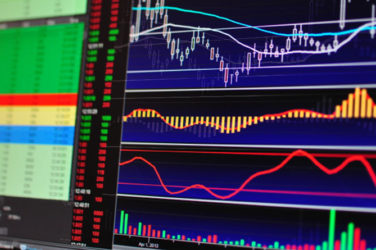Despite some premature prognostications, the sell side / buy side trading relationship is not dead.
To the contrary, the buy side still wants their sell-side trader, whether high- or low-touch, to be a part of their execution strategy. As such, the sell-side trader is being asked by their institutional counterpart to empower them with the latest real-time technology and ‘color’ that gives them a leg up in executing trades. Aside from winning the buy side’s gratitude, the sell side can also endear itself and make its desk the destination of choice when it comes to order flow and destination.
But it all begins with a phone call, according to Cheryl Cargie, head trader at Ariel Investments in Chicago. A self-described “old school” trader, Cargie wants her brokers to reach out to her with color or technology to help her find liquidity.
“I want them to be my partner in this. Please, call me,” she told Traders Magazine in an interview. “I still look to them for help. I pay them to be my eyes and ears out there – especially when I can’t see everything that is going on at all the venues. Show me the order flow.”

Cheryl Cargie, Ariel Investments
And if brokers want to succeed in this new paradigm of lower relative volatility and commissions, they’d be sure to call Cargie and other buysiders like her.
Joe Wald, Chief Executive Officer at Clearpool, wants to empower Cargie’s sell-side partners with an Algorithmic Management System (AMS). The team at Clearpool has heard the buy side’s call for a more complete high-touch trading service; one that includes not just a human voice but an individual who can leverage the firm’s algorithms and provide greater control over routing protocols, as well as deliver real-time performance and venue analytics over the lifecycle of an order making the business of trading not only easier, but more collaborative and more profitable – for all.
“There’s been a real renaissance in the high-touch end of the trading world,” Wald said. “This has evolved out of the buy side’s need for transparency and control of routing protocols and venue choices.”

Joe Wald, Clearpool
After years of grabbing market share and the buy-side traders’ orders, electronic or low- touch trading platforms easily took trades away from their human telephony counterparts. But this trend back towards the high-touch execution that Wald mentioned, is confirmed in a recent Greenwich Associates report. The consultancy found the buy side still values the human high-touch trading experience and has voted with its order flow – and now the low-touch platforms, after years of unbridled growth, are now faced with stagnant market share.
In its latest report, “The Electronic Trading Landscape in 2018,” Greenwich found that the share of total U.S. institutional equity trading volume executed via algorithmic trades and crossing networks have leveled off at about 35% and 9%, respectively. It’s a prime time for the high-touch traders and brokers to capitalize on this stagnation.
“These are the levels that, in aggregate, the buy side feels are the appropriate mix to optimally manage their order flow,” said Richard Johnson, Vice President of Market Structure and Technology at Greenwich Associates and author of the report. “Barring some meaningful event like a ‘MiFID-U.S.’, this blend is unlikely to change much.”

Richard Johnson, Greenwich Associates
“In this constrained business environment, the buy side has less flexibility in managing their trade flow and vendors and brokers will need to work that much harder to grow their business,” Johnson said.
When it comes to winning electronic trading business in U.S. equities, the most successful brokers are those who help institutional investors source liquidity. Liquidity-sourcing algorithms are the most popular choice among U.S. buy-side traders, representing 39% of all algo flow—more than the next three most popular algos combined.
A few providers are leveraging data to build out real-time analytics portals – and the Clearpool AMS marries real-time analytics with complete transparency in strategy design and routing protocols. Clearpool wants traders to be able to make a decision about what venues to trade at based on the institutional trader’s intent of the strategy. As Wald sees it, this is a new bespoke approach – no more ‘one size fits all’. In a conversation with Traders Magazine, Wald added his firm is committed to making the buy-side trader’s job easier and giving him the most information possible. To this end, Clearpool has created its AMS as a ‘next-generation’ algo offering. It has also created the Venue Analysis system that is an aggregated look at venue performance over a month or quarter. This product is a validation tool for existing routing protocols or a source of discovery when exploring new ones.
“This system isn’t rigid – we’ve given clients a way to figure things out for themselves,” Wald said, referring to the AMS. “We’ve exposed the full tool set and done away with the secret black-box type of approach to trading. “We’ve given ownership to the broker and buy-side client in a new way versus bespoke algo providers.”
In opening the black box, Clearpool now provides as part of its AMS a venue analysis product. The product, slated for a second quarter release, will provide institutional traders with granular, sabermetric-type analysis, helping them better choose where and how to route their order. Deciding which exchange or dark pool to route orders to. The end goal is efficient execution with minimal slippage and leakage.
“Traditional venue analysis ‘buckets’ all the executions on a particular venue and grades that venue as a whole,” Wald said. “That yields inconclusive and imprecise information. A better, and differentiated, approach is to look at the intention of the trader, and then give a score based on what that intent was.”
Wald said trade performance on venues is best measured from a ‘phase’ perspective, where each phase represents a unique trader intention. Examples of phases include taking liquidity from lit markets, taking liquidity from an inverted market, executing at the midpoint, resting passively, or using a conditional order. A venue that shows superior executions at the bid-ask midpoint would be best for a trader with that intent, even if that venue’s overall execution data are ordinary.
Aside from measuring by phase, the new iteration of venue analysis factors in a broad set of data that includes peer executions. This goes beyond the current standard of analyzing trades only against your own firm’s results.

Nanette Buziak, Voya
“You need a significant amount of data to be able to really understand what’s happening with your execution,” said Clearpool President Brian Schaeffer in a conversation with Markets Media, Traders Magazines sister publication. “Being able to compare what you’re doing to what the peer universe is doing gives you a differentiated level of context, which helps you make better decisions.”
Nanette Buziak, Managing Director; Head of Equities Trading at Voya Investment Management, agreed. In a conversation with Traders Magazine, she said venue analysis is something that she uses and has been using for close to 10 years now, starting with the availability and collection of Tag 30 data from its brokers. She added that she does not utilize Clearpool for this but has “kicked the tires” on its AMS offering.
“Venue analysis is paramount to our TCA analysis and in our evaluation of brokers, both on the high touch and low touch side,” Buziak said. “It is often very interesting to see the venue analysis when comparing a high touch desk at a broker with those of their low touch desks.”
Looking deeper, Buziak added that she often finds the high-touch executions are the experimentation grounds at some firms for new venues, etc.
“When we identify what looks like toxicity in a venue on the high-touch side, we often immediately ask about the venue, what it is and why it was utilized,” she said. “Venue analysis helps us to trade better in that our counterparties know that we are going to be analyzing our executions in detail.”




